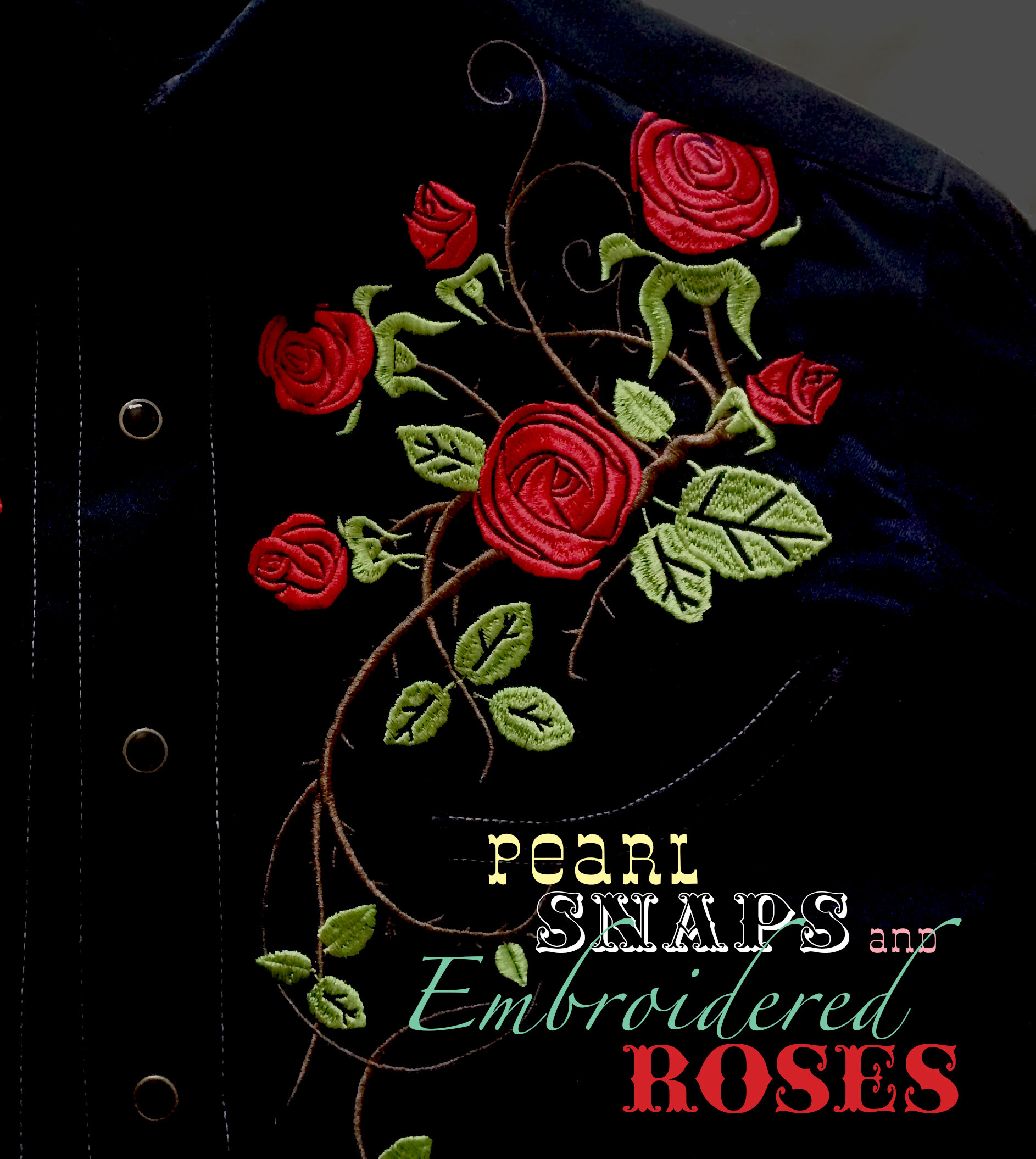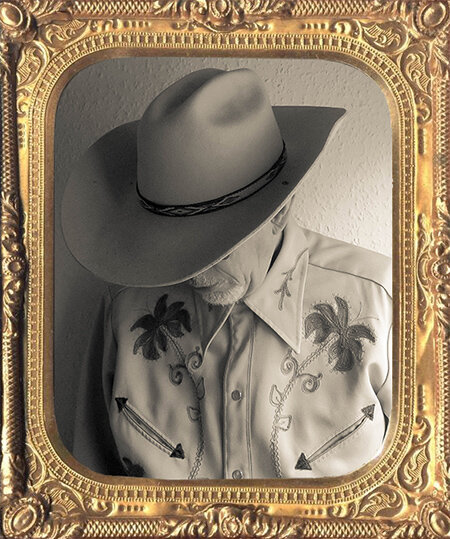I don’t quite remember where my fascination with cowboy shirts started, probably with the many Westerns that were prolific through my childhood on the silver screen and black and white television screens. Those shirts were not the neo-realistic representations of what was actually worn back in the frontier towns and on the pioneer trails. Rather they epitomised the flash perfection of the likes of Roy Rogers and many a singing cowboy - the time when the white hat was reserved for the “good guys.” This was also mirrored in the opening chapter of the Coen Brothers' recent Legend of Buster Scruggs release. Everything is 'just so’ - pressed and unsoiled.
But the real spark for me came in later years, when the western shirt was a item of clothing that became adopted by rock and metal bands. Mainstream country had already abandoned that look in its attempt to broaden its audience. They had long wanted to ditch the “hillbilly” connotations, and had begun to move away from western style clothing when country music began to sell in greater numbers. This move largely prevailed until a performer and exponent of an earlier sartorial and musical hillbilly deluxe stance named Dwight Yoakam arrived on the scene. But more of that inspiring talent later …
The people who first made an impression in my teenage years were the likes of Jimmy Page and Robert Plant of Led Zeppelin; 60’s West Coast rock bands like Moby Grape and The Charlatans; through to members of the New York Dolls and the MC5 in the 70's. All of the former wore cowboy shirts, while cowboy boots seemed to be the footwear of choice in heavy metal.
The origins of the cowboy/western shirt lay in the need for flamboyant costumes and they were largely unique to rodeo riders and on screen Wild West heroes. These clothing creations were the work of a number of tailors like Nudie Cohen, Nathan Turk, Rodeo Ben and others. However they were not mass market items - they were custom made for the individual client as a one-off garment. These artefacts of an era are now highly collectable and expensive items.
A company based in Denver, Miller & Co., realised there was a market for those interested in all things western. A short time later Jack A.Weil joined the company before setting up Rockmount Ranch Wear in the late 1940s. Rockmount made affordable versions of the garments for an eager public who loved the mythology and mantle of what they perceived as the authentic look of those they wished to emulate. It was a niche market but a growing one. It was also helped by the emergence of “dude ranches” around that time. Rockmount was soon joined by labels such as H Bar C and Karman, and soon countless others.
A number of often short-lived fads also helped the western shirt to cross over to a wider audience. These included the Urban Cowboy craze which arose in the wake of the film starring John Travolta, which took the look to a wider demographic. The rise of Garth Brooks and his less traditional variations of the shirt sparked another growth area and saw some acts market their own range of shirts to their fans.
But the person who really took the look back to its origins was Dwight Yoakam. His music, look and attitude spoke of an earlier era and was no doubt helped by these aforementioned rock acts having given credence to its fashionability and innate “coolness.” He worked closely with Manuel Cuevas, a former head tailor with Nudie who established his own business in Nashville and who famously tailored shirts and clothing for clients such as Johnny Cash, Bob Dylan, Marty Stuart, Gram Parsons, as well as for Keith Richards and Salvador Dali, among many others. However it was Manuel’s association with Dwight Yoakam that reignited my interest in both country music and the western shirt.
Another committed exponent of the look has been Jim Lauderdale, who first made me realise what a rhinestone encrusted shirt did for stage presence. The rhinestones caught the stage lighting to create what has been described as a “shirt of light” and made the audience focus on the person centre stage. Lauderdale has also worn shirts from the UK company Dandy & Rose which favours prints from London store Liberty’s, which gives them a certain different Englishness. Lauderdale has remained faithful to “the look” when, all too often these days, the mainstream artists are styled to look more hip hop than Hank. However there are a number of artists who, through their wearing of western shirts and tailored suits, wear their hearts on their respective sleeves - from the choice of clothing to the retro-designed album covers. These performers range from Joshua Hedley in East Nashville to The Country Side of Harmonica Slim in Sweden. Their association with this imagery reveals a love of traditional country music that is deep and often signifies not some retro revival as much as reconfiguring the way to take the music into a new era, while paying respect to the past.
Many of the high fashion couture designers have regularly used the traditional cowboy shirt as source. Indeed, for a time, Tommy Hilfiger had a range of highly-priced off-the-peg Western Wear. Authentic shirts can still be found in vintage stores throughout Europe and the US, but for something more interesting and authentic go to Rockmount.com (as well as Scullyleather.com and Eroper.com) are still producing and designing shirts that tick all the right boxes and long may they, and their genuine contemporaries, continue to do so.
Written by Stephen Rapid (the author freely admits he is all hat (and shirt) and no cattle - as the expression goes).


